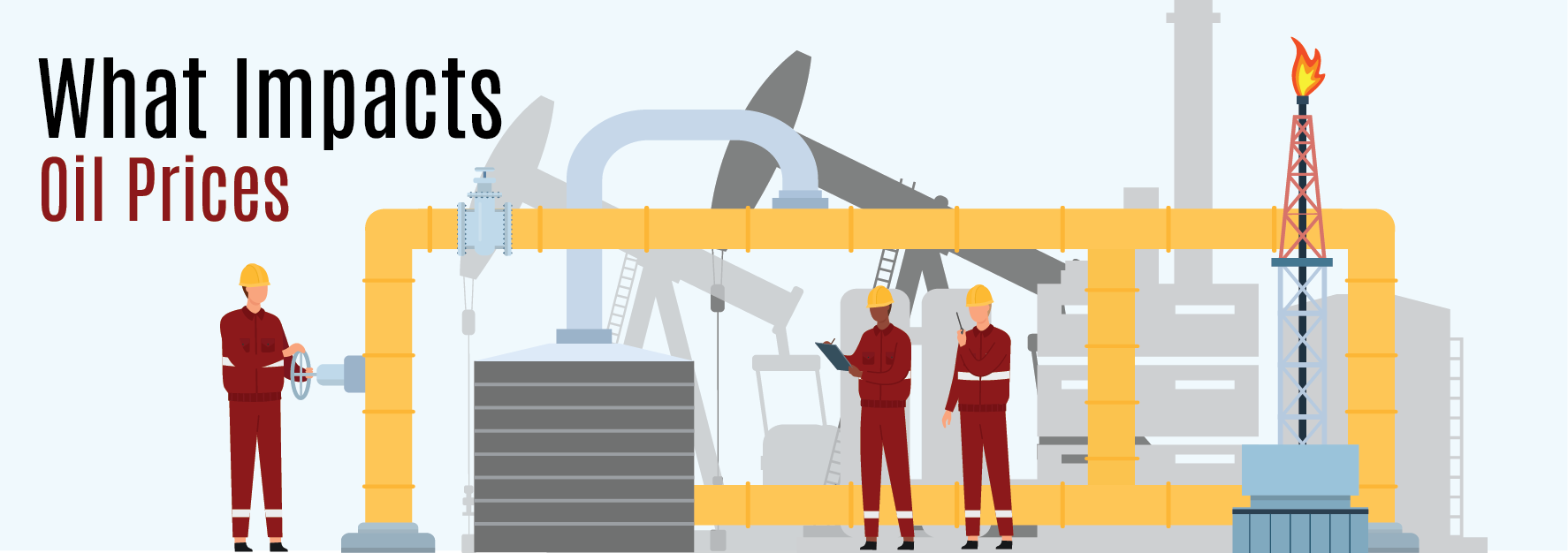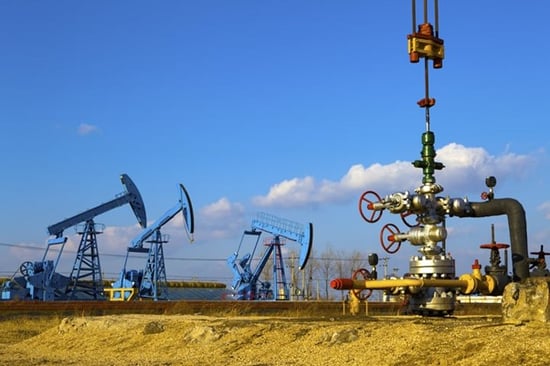What Impacts Oil Prices
Business News • 4 min read • May 17, 2023 9:31:46 AM • Written by: Natasha Osborne

Oil plays a relevant and important role in the global economy, despite the efforts for alternative green energy sources. The price of oil is impacted like most other commodities by supply, and demand. This article explores the different ways in which oil prices can be impacted and the effect this has on the industry.
Oil trading is the buying and selling of different oils, with an aim of earning profit. Oil is a limited resource, so this can cause huge fluctuations in the price, depending on supply and demand changes. There are three methods to trade oil: oil spot price, oil futures, and oil options.

Oil Spot Price
Oil spot price represents the cost of buying oil or selling oil immediately ‘or on the spot’ instead of the set date in the future. Future prices reflect just that, what the market believes the oil will be worth, spot prices are the current value.
Oil Futures
Oil futures determine the price, they are contracts where an agreement is drawn up to exchange the amount of oil at set price and set date. This method enables you to trade rising and falling prices.
Oil Options
Oil options are like oil future contracts, but without the obligation to trade. Providing you the right to buy or sell an amount of oil at a set price on a set expiry dare, but without any obligation to follow through.
So how does the price of oil change? Ultimately when there is a demand for oil that outweighs the supply, the price will rise. However, when the supply outweighs the demand then the price will fall. An example of this was during the Covid-19 pandemic, the demand for oil rapidly plummeted and for the first-time on record prices went into negative figures.
There are other factors that can impact the price of oil: The influence of the Organisation of Petroleum Exporting Countries (OPEC), Global Economic performance, oil storage and greener energy alternatives.
The Influence of OPEC
Countries within the OPEC produce a large share of the global supply of oil. This group is made up of 13 countries (Algeria, Angola, Congo, Equatorial Guinea, Gabon, Iran, Iraq, Kuwait, Libya, Nigeria, Saudi Arabia, United Arab Emirates and Venezuela) it sets production levels to meet the global demand and can influence the price of oil by increasing or decreasing the output. During the Covid-19 pandemic, allies of OPEC agreed to reduce production to stabilise prices, however, after a disagreement with Russia despite not being a member of OPEC, as a large exporter this caused a drop in the price of oil.

Global Economic Performance
When the economy grows, the demand for oil increases to meet the need of industries, such as energy, transport, manufacturing, and pharmaceuticals. When the demand outweighs supply, the price of oil will rise. During a recession, demand for oil drops, resulting in lower prices. Oil traders typically use economic data to keep updated with the health of the economy to learn the upcoming trends and patterns.
Oil Storage
When the demand for oil decreases and production remains the same, this results in a surplus of oil. This is then stored at appropriate facilities. However, there is a limit to the volume of oil that can be stored, a surplus of oil will impact market prices.
Alternative Energy Sources
The pursuit for greener energy sources continues to expand, to try to reduce and reverse climate change, such as wind, solar, hydroelectric. This will impact the demand for oil and therefore oil prices. However, high oil prices could work in the favour of renewable energy. In countries where the electricity grid relies on fossil fuels, the high electricity prices make renewable sources more competitive for electricity generation. Another benefit is the high budget surplus governments obtain from high oil prices, can be used to fund renewable energy projects.
Conclusion
At the date of publishing at the beginning of this week oil prices are currently lower. ‘Crude oil started trade with a decline, based on Asian trade data. Brent was trading at below $75 per barrel and West Texas Intermediate at $70 per barrel, as fears of a possible U.S. debt default continues to run high, while Congress remains locked in negotiations over the debt ceiling.’
‘Since the start of the year, oil has lost some 13%, according to Bloomberg, and traders have accumulated the largest short position on the commodity since July 2021.’
These figures and data suggest that oil prices haven’t recovered since the pandemic and with a push for renewable energy, will the oil industry be able to recover?
Thank you for reading this week’s blog!
We’d love to hear what your thoughts are on this week’s blog. Leave a comment below and if you enjoyed it, then why not share it to other people who may also enjoy it!
Reach the World. Giving Made Easy with Impact.
Related Articles

Business News
Africa's Largest Gold Mines

Business News
Electric Vehichles- The Impact on Mining

Business News
Storm Kazakhstan Partnership
Don't Miss Out On A Thing
Sign up and Join Our Newsletter Today